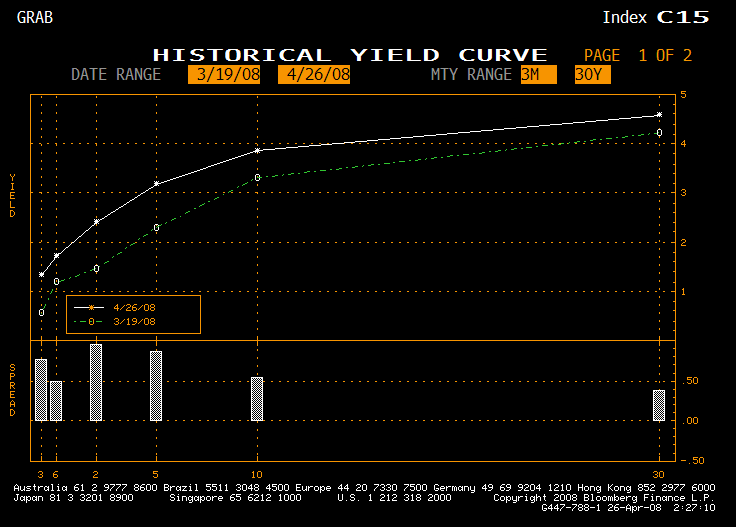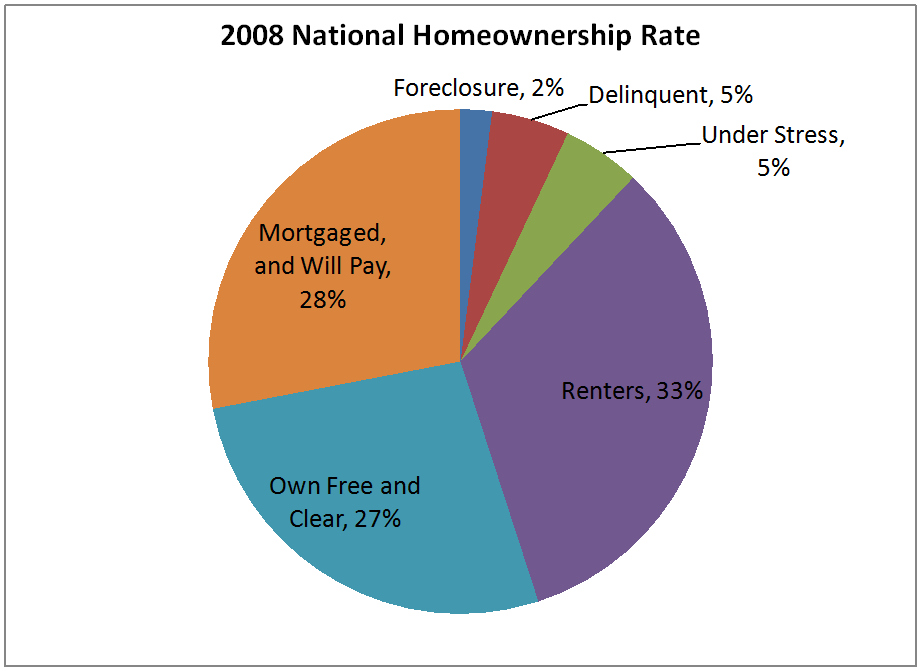National Atlantic has filed its Preliminary Proxy Statement. I’m only going to tackle one part of it here tonight — the section starting on page 24, “Opinion of the Financial Advisor.” Those who have read me for a long time know that I am neither biased for or against any “fairness opinion.” For those who want to go back to my early days on RealMoney, you can view what I wrote on the MONY acquisition by AXA. The fairness opinion was correct, and the contesting value investors were dead wrong. Part of the problem was not understanding the insurance accounting.
With National Atlantic, I think the fairness opinion does not truly represent the value of the company. Let me go through a few critical bits of the fairness opinion:
(Page 26)
Selected Publicly Traded Companies Analysis. Banc of America Securities
reviewed publicly available financial and stock market information for National
Atlantic and the following seven publicly traded personal lines property and
casualty insurance companies with a market capitalization below $2.5 billion:
o Mercury General Corporation
o State Auto Financial Corporation
o Horace Mann Educators Corporation
o Infinity Property & Casualty Corporation
o Safety Insurance Group, Inc.
o Donegal Group, Inc.
o Affirmative Insurance Holdings, Inc.
Banc of America Securities reviewed, among other things, per share equity
values, based on closing stock prices on March 7, 2008, of the selected publicly
traded companies as a multiple of calendar years 2008 and 2009 estimated
earnings per share, commonly referred to as EPS, and as a multiple of book value
per share as of December 31, 2007 (in the case of Safety Insurance Group and
Affirmative Insurance Holdings, as of September 30, 2007).
Affirmative and Infinity do not belong in this group, because they are both nonstandard auto writers, which get lower valuations than standard writers. Donegal is mainly a commercial writer when last I looked… the rest are fine. I might have included Gainsco, Commerce Group, or Universal Insurance Holdings. In any case, it biases the calculation of the estimated price low.
Implied Per Share Equity Value Reference Ranges for National Atlantic Consideration
--------------------------------------------------------------------- -------------
2008E EPS 2007 Book Value
--------------- -------------------
$3.27 - $4.20 $5.24 - $7.85 $6.25
It also would have been better to do a scatterplot of Price-to-book versus expected ROE on compared companies. I will have to perform that analysis eventually.
(Page 27)
Selected Precedent Transactions Analysis. Banc of America Securities
reviewed, to the extent publicly available, financial information relating to
the following twenty selected transactions involving property and casualty
insurance companies with a transaction value below $500 million:
Announcement
Date Acquiror Target
- --------------- -------------------------------------------------- -----------------------------------------
2/20/08 o Meadowbrook Insurance Group, Inc. o ProCentury Corp.
1/3/08 o QBE Insurance Group Ltd. o North Pointe Holdings Corp.
4/4/07 o Fortress Investment Group LLC o Alea Group Holdings Ltd.
3/14/07 o Argonaut Group, Inc. o PXRE Group Ltd.
12/4/06 o Elara Holdings Inc. o Direct General Corp.
11/22/06 o Clal Insurance Enterprises Holdings Ltd. o GUARD Financial Group Inc.
11/13/06 o Tower Group Inc. o Preserver Group Inc.
10/31/06 o American European Group, Inc. o Merchant's Group Inc.
10/6/06 o Affordable Residential Communities Inc. o NLASCO, Inc.
10/3/06 o Affirmative Insurance Holdings, Inc. o USAgencies, L.L.C.
9/28/06 o Arrowpoint Capital Corp. o Royal & Sun Alliance Insurance
8/16/06 o QBE Insurance Group Ltd. o One Beacon Insurance Group, Ltd.
8/4/06 o Delek Group, Ltd. o Republic Companies Group, Inc.
7/19/06 o Inverness Management L.L.C. o Omni Insurance Group Inc.
11/4/05 o General Motors Acceptance Corp. o MEEMIC Insurance Company
5/22/03 o Liberty Mutual Holding Company Inc. o Prudential Financial Inc.
5/22/03 o The Palisades Group o Prudential Financial Inc.
3/26/03 o Nationwide Mutual Insurance Co. o Prudential Financial Inc.
11/1/00 o American National Insurance Company o Farm Family Holdings, Inc.
10/25/00 o State Automobile Mutual Insurance Company o Meridian Insurance Group, Inc.
The only deal here that would truly be a “comparable” might be Republic Companies. It was a company that was mainly a personal lines company, unlike many of the rest of these deals which are for commercial insurers and reinsurers (I am not familiar with all of them). Republic was sold significantly over its book value. And, where is Commerce Group? I know it is too big to meet the cutoff, but there is a sale of a single state insurer. I would think that valuation would be relevant.
Implied Per Share Equity Value
Reference Ranges for National Atlantic Consideration
------------------------------------------ ------------------
2008E EPS 2007 Book Value
---------------- -------------------
$5.36 - $6.30 $8.51 - $9.82 $6.25
So, I think these values are low as well. There is far more certainty to the valuation of the reserves of a short-tailed insurer, which usually deserves a higher valuation.
(Page 28)
Discounted Cash Flow Analysis. Banc of America Securities performed a
discounted cash flow analysis of National Atlantic to calculate the estimated
present value of the standalone unlevered, after-tax free cash flows that
National Atlantic could generate during National Atlantic's fiscal years 2008
through 2012 based on the National Atlantic management forecasts. Banc of
America Securities calculated terminal values for National Atlantic by applying
terminal forward multiples of 7.0x to 9.0x to National Atlantic's fiscal year
2013 estimated GAAP earnings and of 0.40x to 0.70x to National Atlantic's
estimated 2012 year-end book value. The cash flows and terminal values were then
discounted to present value as of March 7, 2008 using discount rates ranging
from 15% to 17%. This analysis indicated the following implied per share equity
value reference ranges for National Atlantic as compared to the Consideration:
Implied Per Share Equity Value
Reference Range for National Atlantic Consideration
----------------------------------------------- --------------------------
$5.42 - $7.42 $6.25
I’d like to see them spill the guts of the calculation, and the other calculations above as well. Using “0.40x to 0.70x to National Atlantic’s estimated 2012 year-end book value” and “discount rates ranging from 15% to 17%” is too severe. This is a company with no debt. It’s marginal cost of capital, using the “pecking order” theory is low. Also, short-tail P&C companies under competent management teams don’t retain valuations below 0.8x book.
Run-off Analysis. Banc of America Securities also performed a run-off
analysis of National Atlantic to calculate the net present value of dividends
that would be paid to shareholders over the remaining life of the company
assuming that it serviced its existing policies without writing any additional
policies or renewing any existing policies. Based on the assessment of National
Atlantic management that the company would not be permitted to pay annual
dividends by the New Jersey regulators, this analysis calculated the net present
value of the final dividend available for distribution to shareholders after all
payouts on loss reserves and losses on unearned premium reserves, estimated to
be approximately $88.0 million payable in 2016. Banc of America Securities
applied a sensitivity analysis to assess a range of values if the loss reserves
were inadequate by up to 10% or were overstated, showing a redundancy of up to
10%. The range of final dividend distributions were then discounted to present
value as of March 7, 2008 using discount rates ranging from 13% to 17%. This
analysis indicated the following implied per share equity value reference ranges
for National Atlantic as compared to the Consideration:
Implied Per Share Equity Value
Reference Range for National Atlantic Consideration
----------------------------------------------- --------------------------
$1.36 - $3.60 $6.25
Again, the discount rate is too high. Beyond that, they make the fatal assumption that the company can’t close its books until 2016. If National Atlantic stopped writing policies today, then, one year from today, it would receive its last premium. The company would operate with a skeleton staff for one more year, after which, the remaining book could easily be sold to a company specializing in run-offs. You wouldn’t get your money in 2016. It would be more like 2010. Six years of interest discount at 13-17% makes a huge difference in the price.
=-=-=-=-=-=-=-=-=–=-==-=–=-==-=-=–=-==–=
I have more work to do here, but my fundamental view is not changed. I will be voting against the deal, and encouraging others to do the same. Should the deal succeed, I will likely file for appraisal rights. As I have noted before, I believe that I have meritorious arguments for a better price.
Full disclosure: long NAHC SAFT



 A word before I start: I’m averaging two book review requests a month at present. I tell the PR people that I don’t guarantee a review (though I have reviewed them all so far), or even a favorable review. They send the books anyway.
A word before I start: I’m averaging two book review requests a month at present. I tell the PR people that I don’t guarantee a review (though I have reviewed them all so far), or even a favorable review. They send the books anyway.

